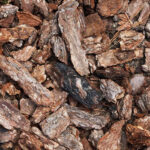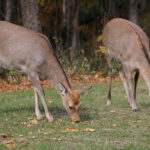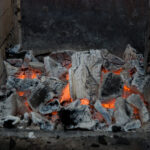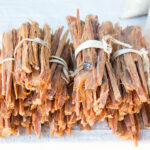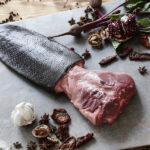If you’ve ever hunted coyotes for their fur or for predator control, you might have wondered whether their meat is any good to eat.
Many trappers and hunters strive to make the most of their kills by using every last bit of the animal. But can you eat coyotes without any major risks? Let’s get into it.
Table of Contents
- Can You Eat Coyotes?
- What Does Coyote Meat Taste Like?
- What Texture Does Coyote Meat Have?
- What Are The Risks Of Eating Coyotes?
- How To Prepare And Cook Coyote Meat:
- Tips For Cooking Coyote
- Final Thoughts
- Related Posts
Can You Eat Coyotes?
You can in fact eat coyotes. If cooked properly, it’s totally safe to eat coyote meat. And it’s perfectly legal to eat it as well, assuming the coyote was hunted legally.
Historically, several Indigenous groups across North America occasionally hunted and ate coyotes if other food sources were limited.
Many hunters have turned away from the idea of eating coyotes because of the smell of the carcass.
A dead coyote often smells like a wet dog – not the most appetizing smell, but once it’s skinned and cleaned, the flesh itself does not have a strong scent. And it doesn’t taste too bad, either.
What Does Coyote Meat Taste Like?
Coyote meat has a reputation for having a strong flavor, but many who try it claim it’s indistinguishable from other game meat, like venison. Several people report that they detect a liver flavor similar to that of pâté when eating coyote meat
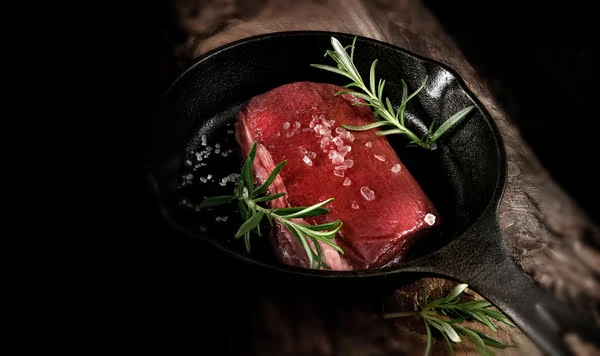
Others praise it as some of the best-tasting meat they’ve eaten – but that’s a rare opinion. To many, it just tastes like any average red meat, or even like an overcooked duck.
It’s likely not going to win any awards for being the most delicious meat, but it is certainly not as disgusting as many imagine it to be.
What Texture Does Coyote Meat Have?
Coyotes are slim animals, creating lean meat. The low levels of fat give it a dry texture, so it’s best to cook it with lots of oil or butter. Coyote meat is often chewy and tough, and cuts from the coyote’s haunches and shoulders are especially gristly with cartilage. But if it’s tenderized and slowly cooked, it can taste juicy and fatty.
Just like beef, coyote meat texture and taste will change depending on the animal’s diet. It will also change depending on the animal’s age – if the coyote is old, its meat will likely be tougher.
If coyotes are eating lots of fiber, like berries and grains, they may have lower fat content. If they’re eating healthy prey, like rabbits and deer, their meat will be higher in fat and protein.
So it’s important to consider when the coyote was hunted – a coyote caught in winter will likely produce tastier meat.
It’s also important to think about where the coyote was living. A rural coyote living in an area with lots of prey around will likely have healthier and tastier meat.
Coyotes living in urban areas eat lots of things that aren’t naturally part of their diet, including trash and plastic. Because of this, many of them are malnourished.
Their meat will have even less fat and won’t taste as good, nor will it have as high a nutritional value.
What Are The Risks Of Eating Coyotes?
Like other wild game, coyote meat carries more risks than domestically raised meat. The major parasite to watch out for in wild game like hogs, bears, moose, and coyotes is Trichinella, a roundworm.
An infected coyote will have cysts of these roundworms in its muscles, which can be transmitted to humans if the coyote meat is not cooked well before being eaten. The roundworm will then replicate through the person’s body.
The disease, trichinosis, causes muscle cramping, heavy fever, vomiting, and headaches, among other symptoms.
Like dogs, coyotes can also carry the parasite Toxocara Canis, another roundworm, which lives in the canines’ intestines but can also migrate throughout their bodies and form cysts. If you’re infected with toxocariasis, you may experience eye pain, rash, fever, and coughing.
The meat must be prepared soon after the coyote’s killed, as it will start decaying immediately. If any meat around the belly begins turning green, it means bacteria have begun decomposing the meat and it should not be eaten.
The risk of these parasites can be prevented if you thoroughly cook the meat. It’s also important to be careful when preparing the meat – parasites can be transmitted if you don’t wash your hands properly after touching the raw meat.
How To Prepare And Cook Coyote Meat:
The main cuts you can get from a coyote are the shoulders, the haunches, and the back strap.
If you’re nervous about the taste, start with the backstrap. It’s the most tender cut and usually has a milder flavor than cuts from the legs. Rinse the meat well with clean water to get any dirt, fur, and bugs off.
You can cook up slabs of coyote the same way you’d cook up any other meat. Just make sure you cook it until it reaches an internal temperature of 165˚F – having a meat thermometer on hand is crucial to be safe!
Here are a few coyote meat recipes to get you started:
Grilled Coyote Steaks
- Slice the backstrap into small steaks.
- Tenderize the steaks by smacking them with a thick knife blade, creating small cuts
- Trim off all the fat (white areas)
- Drizzle olive oil onto the steaks, making sure to cover all sides.
- Season with spices of choice (for example, steak spice).
- Grill the steaks over a fire or barbeque. Make sure it’s well done.
- Try eating it by itself. If the taste’s not for you, throw it in tacos smothered with other toppings.
Coyote Jerky
- Cut the backstrap into strips and marinade for 24 hours in 1 cup each of apple cider vinegar, brown sugar, and soy sauce, along with paprika, pepper, and other desired spices.
- Dry the meat in a dehydrator until completely dry (about 6 hours).
Slow-Cooked Coyote Thigh
- Sear a thigh on a pan with onions on high heat, then pop it into a slow cooker with broth.
- Cook on low for 6 hours, or until the meat is soft and easily separates from the bone.
Other Meals To Make With Coyote Meat
Coyote meat can be as versatile as any other meat. Throw it in stir fry, meatballs, and chilis.
Stews are a good dinner option to use up the coyote shoulder and haunch cuts, as these pieces have tougher textures and stronger flavors that will mellow in the soup.
Tips For Cooking Coyote
To make it more flavorful and moist, brine the meat by soaking it in salty water for a few hours (use a ratio of 1 cup of water to 1 tablespoon of kosher salt). You can even brine it for a few days, changing out the water every day. This will make the meat tender.
After bringing, make a dry rub of spices (try garlic powder, cumin, smoked paprika, and dry mustard) to rub onto the meat before cooking.
Final Thoughts
If you bagged a coyote, don’t let its meat go to waste!
As long as it’s well cooked, you can safely eat coyote. It has a gamey flavor and can have a chewy texture, but to many, it tastes like any other meat.

